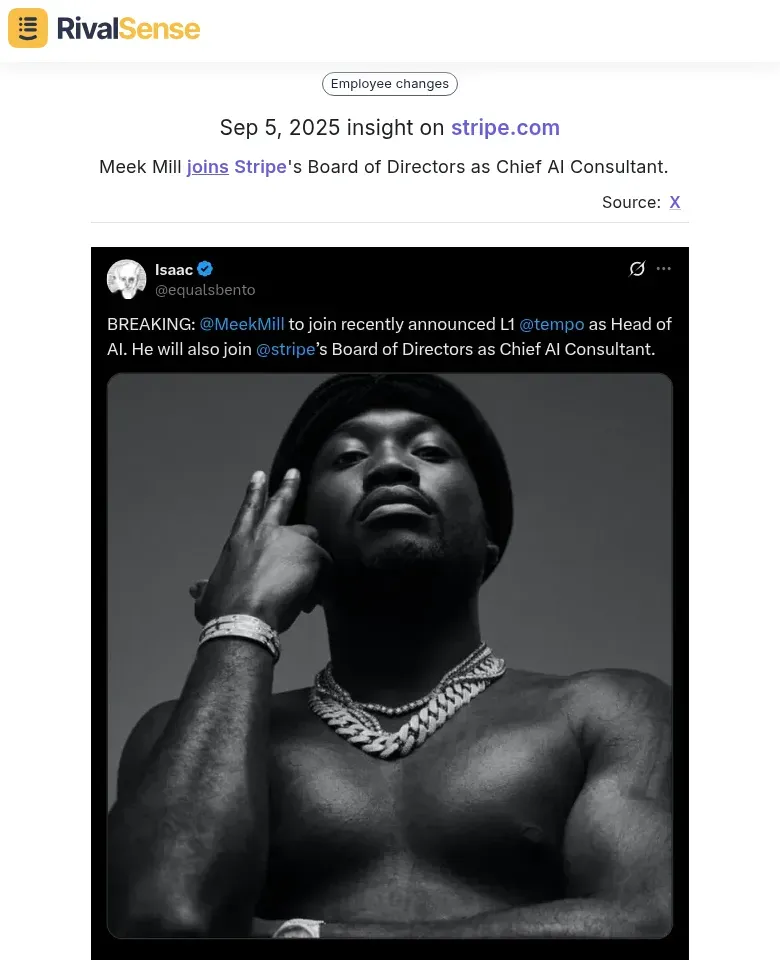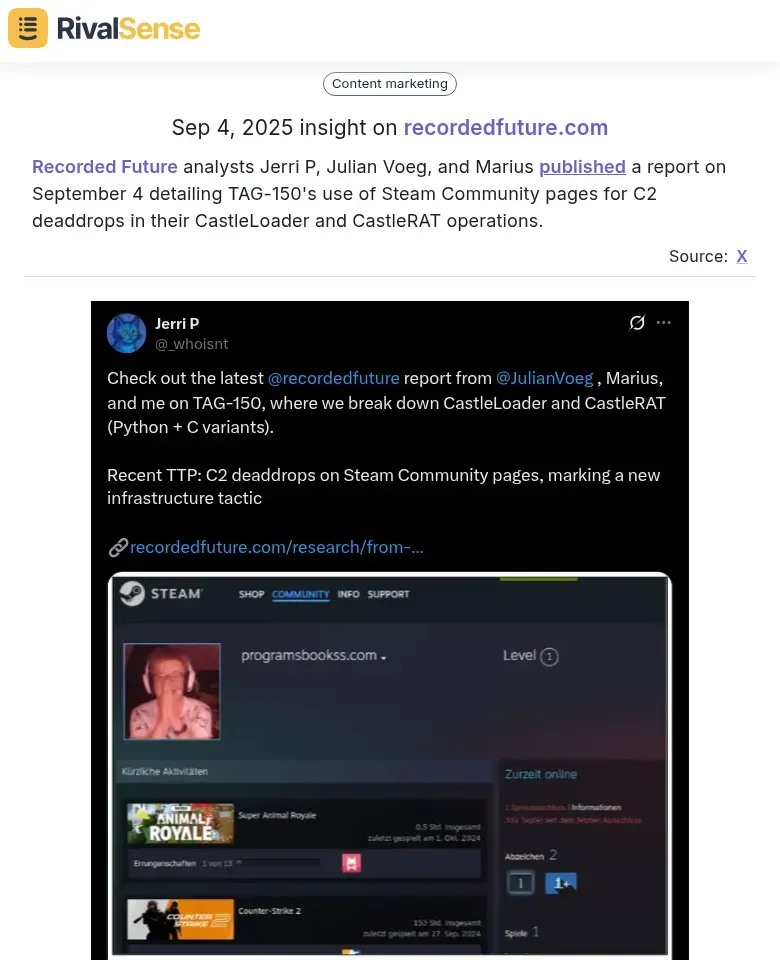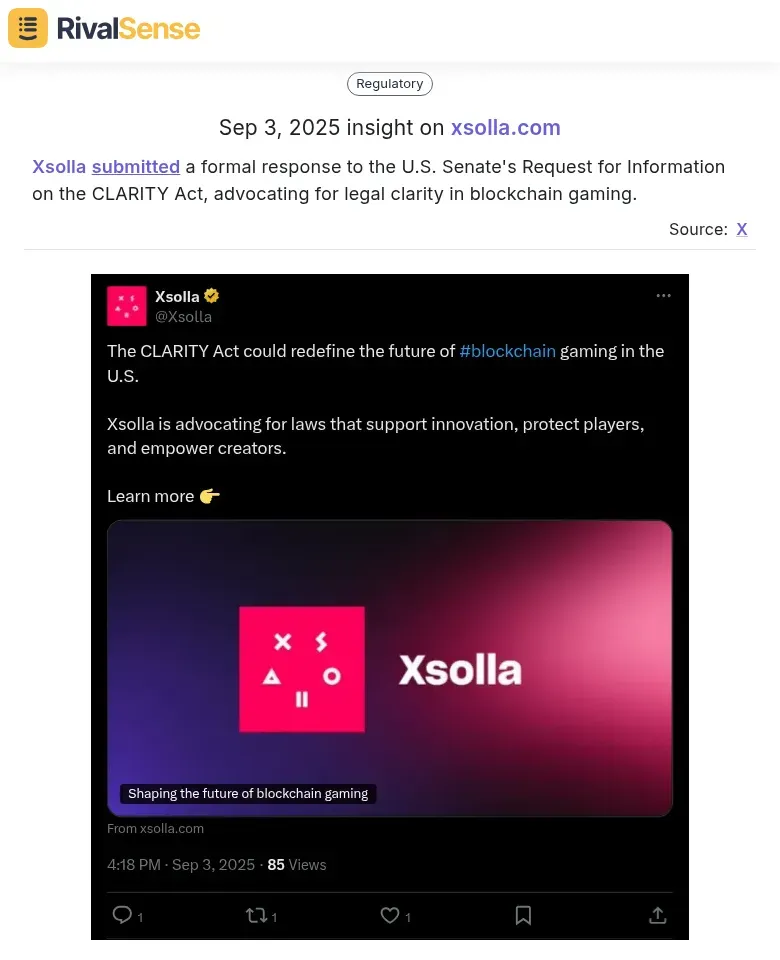Twitter Competitor Insights: Actionable Cultural Alignment Strategies
In today's hyper-competitive landscape, cultural alignment has emerged as the ultimate competitive advantage—82% of executives now recognize strong organizational culture as a potential differentiator. While traditional metrics track surface-level announcements, cultural signals reveal the deeper strategic DNA that drives sustainable success.
Twitter serves as your real-time cultural intelligence hub, offering unprecedented access to competitors' authentic behaviors, values, and strategic priorities. Beyond press releases and product launches, you can observe:
• How competitors respond to customer feedback (revealing customer-centricity)
• Their partnership patterns and collaboration styles (indicating strategic alliances)
• Employee engagement and hiring announcements (showing talent acquisition strategies)
• Event participation and industry positioning (demonstrating market focus areas)
Practical Action Steps:
- Set up Twitter alerts for 3-5 key competitors to monitor cultural patterns
- Analyze engagement rates and response times to gauge customer focus
- Track partnership announcements for strategic alliance insights
- Monitor hiring patterns as indicators of growth trajectories
- Use sentiment analysis to identify cultural strengths and vulnerabilities
By decoding these cultural signals, you gain predictive intelligence that goes beyond what competitors say to understand how they actually operate—enabling you to anticipate moves, identify gaps, and craft strategies that resonate authentically with your market.
Decoding Board-Level Cultural Signals: The Meek Mill-Stripe Case Study
Board appointments often reveal strategic shifts before they become public knowledge. Tracking leadership changes can provide early warning signs of new market directions or technological focus areas.

Meek Mill joining Stripe's Board as Chief AI Consultant demonstrates how companies are blending cultural influence with technical expertise. This type of insight is valuable because it signals strategic intent beyond traditional business metrics—showing how companies are positioning themselves for future market trends.
Key insights:
- High-profile appointments signal strategic intent beyond traditional credentials
- Cultural influencers bring market connectivity that traditional executives lack
- AI expertise combined with cultural reach creates powerful governance synergy
Actionable steps for your board:
- Audit current board composition for cultural and technological diversity gaps
- Identify non-traditional candidates who bridge multiple domains (tech + culture)
- Establish clear metrics to measure cultural alignment impact
- Create onboarding processes for unconventional board members
- Develop governance frameworks that leverage diverse perspectives
Remember: The most innovative boards balance deep industry expertise with fresh cultural perspectives to anticipate market shifts before competitors.
Infrastructure Innovation Insights: Recorded Future's Threat Intelligence Approach
Competitor infrastructure changes often indicate scaling plans or new market entries. Monitoring technical and operational updates can reveal growth patterns before they become obvious.

Recorded Future's detailed analysis of threat actor infrastructure demonstrates the value of technical intelligence. Tracking such detailed operational insights helps businesses understand competitor capabilities and potential market moves before they're publicly announced.
Recorded Future's threat intelligence approach offers profound lessons for competitive market analysis. By studying how cyber threat actors deploy adaptive infrastructure—using multi-tiered operational models that include primary, secondary, and fallback systems—businesses can learn about organizational flexibility and resilience.
Practical steps to apply these insights:
- Adopt multi-source intelligence gathering: Monitor competitors through legal sources: websites, press releases, job boards, and financial statements
- Implement scenario analysis: Use frameworks like PEST to anticipate competitor moves based on external factors
- Build resilient operational models: Diversify supply chains, partnerships, and market presence to mitigate risks from competitive pressures
Key takeaway: Continuous, real-time analysis and adaptive strategies can transform static competitor tracking into dynamic, actionable market intelligence.
Regulatory Advocacy as Competitive Positioning: Xsolla's CLARITY Act Response
Regulatory engagement often indicates where competitors see future market opportunities. Tracking policy responses can reveal strategic priorities months before product launches.

Xsolla's formal response to the U.S. Senate's Request for Information on the CLARITY Act shows how regulatory intelligence can provide competitive advantages. Monitoring such engagements helps businesses anticipate market shifts and regulatory changes that could impact entire industries.
Xsolla's proactive response demonstrates how regulatory advocacy creates competitive moats. By engaging early with Senate policymakers, Xsolla positioned itself as an industry thought leader while shaping favorable regulations for blockchain gaming.
Actionable steps for regulatory competitive positioning:
- Monitor emerging legislation 6-12 months before formal proposals
- Establish cross-functional regulatory task forces (legal, product, marketing)
- Develop position papers that align regulatory outcomes with business objectives
- Build relationships with policymakers through industry associations
- Translate regulatory wins into marketing messaging about compliance leadership
Xsolla's approach shows that regulatory strategy isn't just about compliance—it's about shaping the competitive landscape to your advantage.
Actionable Cultural Alignment Frameworks for Business Leaders
To implement cultural alignment frameworks, start by establishing a systematic monitoring process. Track competitors' cultural signals—analyze their social media tone, employee reviews, and community engagement patterns. Create a cultural dashboard that flags shifts in competitor values, communication styles, and stakeholder interactions.
Build organizational capabilities through cross-functional cultural intelligence teams. Train these teams in ethnographic research methods to interpret cultural data. Develop rapid adaptation protocols: when a cultural trend emerges, your team should have a 72-hour response plan to assess implications and adjust strategies.
Integrate cultural intelligence into strategic planning:
- Conduct quarterly cultural audits comparing your organization against top competitors
- Implement a cultural risk assessment matrix for all major decisions
- Create cultural KPIs (employee cultural alignment scores, customer perception metrics)
- Establish a cultural advisory board including diverse external perspectives
Checklist for leaders:
- [ ] Set up automated cultural signal monitoring
- [ ] Train teams in cultural interpretation techniques
- [ ] Create adaptation playbooks for common cultural shifts
- [ ] Embed cultural considerations in all strategic meetings
- [ ] Measure cultural alignment quarterly
Conclusion: Integrating Cultural Insights into Competitive Strategy
Integrating cultural insights into your competitive strategy requires a systematic approach that synthesizes intelligence across all competitor touchpoints. The examples we've examined—from board appointments to regulatory engagements—demonstrate how diverse intelligence streams contribute to comprehensive competitive understanding.
For continuous monitoring, implement a three-tier system: (1) Automated social listening tools for real-time cultural sentiment tracking, (2) Quarterly cultural audits using established frameworks, and (3) Cross-functional intelligence teams that meet regularly to analyze cultural shifts.
Measure impact through specific KPIs:
- Customer retention rates in culturally-aligned segments
- Employee engagement scores
- Market share growth in target demographics
- Revenue correlation with cultural alignment initiatives
Practical implementation checklist:
- Establish baseline cultural metrics for all major competitors
- Set up automated alerts for cultural shifts and leadership changes
- Create cultural scorecards updated quarterly
- Train teams on cultural pattern recognition
- Integrate cultural insights into all strategic planning sessions
Remember: Cultural alignment isn't a one-time project but a continuous competitive advantage that requires dedicated resources and executive sponsorship.
Ready to transform your competitor intelligence? Try RivalSense for free and get your first comprehensive competitor report today. Track product launches, pricing changes, leadership moves, and regulatory engagements—all delivered in a weekly email that keeps you ahead of market shifts.
📚 Read more
👉 7 Aviation Defense Productivity Boost Techniques: From Talent to Tech
👉 Event Intelligence Workflow: Uncover Competitor Strategies for Key Account Loyalty
👉 Business Partnership Best Practices: The Ultimate Strategic Guide for 2025
👉 Localize Semiconductor Partnerships: 5 Actionable Strategies for Growth
